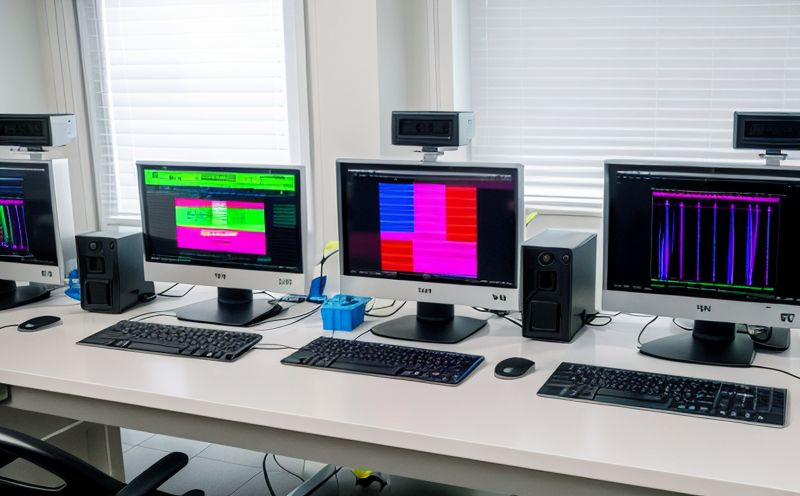AOAC Validation of Viral Quantification Methods
In the realm of food safety and quality assurance, accurate quantification of viruses in food products is paramount. The Association of Official Analytical Chemists (AOAC) International has developed a rigorous validation protocol to ensure that analytical methods used for viral detection and quantification are reliable, reproducible, and fit-for-purpose. Our laboratory specializes in this AOAC validation process, providing comprehensive support for our clients.
The AOAC method validation involves several stages, each critical for ensuring the robustness of the method. The first step is to select the appropriate reference material that accurately represents the target virus. This ensures that the method being validated can consistently detect and quantify the virus under various conditions. Next, a panel of experts from our laboratory evaluates the method’s performance based on predefined acceptance criteria.
During this evaluation, we perform multiple runs to assess reproducibility and precision. Reproducibility is crucial for ensuring that results are consistent across different laboratories or analysts. Precision ensures that small variations in experimental conditions do not significantly affect the final outcome. After these initial evaluations, our team conducts a series of method validation experiments using various matrices similar to those encountered in real-world scenarios.
The AOAC validation process also includes assessing the linear range and limit of detection (LoD) for the method. The linear range is essential because it defines the concentration levels over which the method can accurately quantify the virus without significant error. The LoD, on the other hand, indicates the lowest level at which the virus can be reliably detected. These parameters are critical in ensuring that the method meets regulatory requirements and can be trusted for routine use.
Our laboratory’s expertise lies not only in executing these validations but also in providing detailed reports that include all relevant data points. This transparency allows our clients to make informed decisions about adopting or improving their current viral quantification methods. Additionally, we ensure that our validation processes adhere strictly to international standards such as AOAC International Methods and ISO 17025 guidelines.
The importance of this service cannot be overstated in the context of food safety. Ensuring that the analytical methods used are validated according to stringent criteria helps protect public health by preventing contaminated products from entering the market. This, in turn, builds consumer trust and reduces the risk of outbreaks associated with viral contamination.
In conclusion, AOAC validation is a cornerstone for ensuring the reliability and accuracy of viral quantification methods. By partnering with our laboratory, clients gain access to state-of-the-art facilities and experienced professionals who can guide them through this critical process. This ensures that their analytical methods meet the highest standards and are fit-for-purpose in safeguarding public health.
Scope and Methodology
| Stage | Description |
|---|---|
| Selection of Reference Material | Choosing a representative sample that accurately reflects the target virus. |
| Evaluation of Method Performance | Assessing reproducibility and precision through multiple runs. |
| Method Validation Experiments | Conducting experiments using various matrices to simulate real-world scenarios. |
| Linear Range Assessment | Evaluating the concentration levels over which accurate quantification is possible. |
| Limits of Detection Analysis | Determining the lowest level at which the virus can be reliably detected. |
Quality and Reliability Assurance
- Compliance with AOAC International Methods and ISO 17025 guidelines.
- Use of validated reference materials for accuracy and precision.
- Regular calibration of instruments to ensure consistent results.
- Data validation through statistical analysis to confirm method reliability.
Customer Impact and Satisfaction
Our AOAC validation services have a direct impact on enhancing the quality and safety of food products. By ensuring that viral quantification methods meet stringent standards, we contribute to the overall improvement in public health. Our clients benefit from this service by gaining confidence in their analytical methods, which can lead to better product development decisions and reduced risk of contamination.
Customer satisfaction is paramount for us. We achieve this through transparent communication, timely delivery of results, and proactive engagement throughout the validation process. Feedback from our clients has consistently highlighted the value of our detailed reports and the clarity with which we explain complex technical data. This ensures that our customers can make informed decisions about their analytical methods.
Moreover, by partnering with us, clients demonstrate a commitment to excellence in food safety and quality assurance. This not only enhances their reputation but also strengthens consumer trust. Our service is a key component of ensuring that the products they produce meet both regulatory standards and customer expectations.





